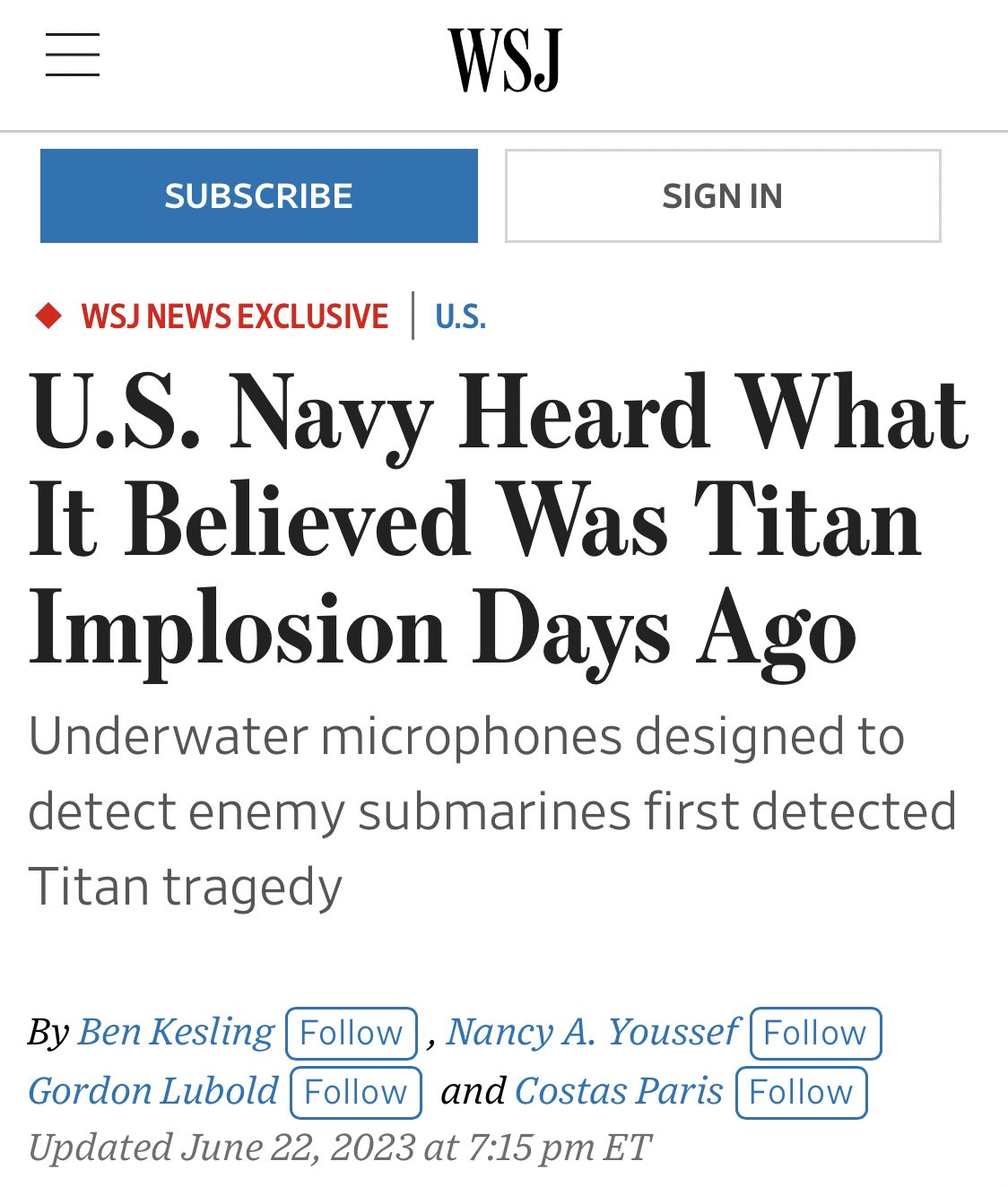(Boston, MA) – Startling revelations have emerged from an exclusive report by the Wall Street Journal, shedding new light on the implosion of the Titan submersible and the subsequent loss of all five passengers. According to the publication, the U.S. Navy detected a sound believed to be consistent with a deep-sea implosion days before the wreckage of the submersible was discovered. This disclosure has ignited a wave of questions surrounding the incident and the response efforts that followed.
The Wall Street Journal’s report indicates that the U.S. Navy’s hydrophones, which were deployed in the area near the Titanic wreckage, captured a distinct low-frequency acoustic signal resembling the implosion of a deep-sea vessel. However, at the time of the detection, the Navy did not connect the sound to the ongoing search for the missing Titan submersible, leading to a significant delay in recognizing its significance.
The delayed recognition of the implosion signal has raised concerns about the coordination and communication between different agencies involved in the search and rescue operation. The Wall Street Journal’s report suggests that had the Navy immediately identified the sound and its potential connection to the missing submersible, it could have expedited the recovery efforts.
The U.S. Navy, represented by Commander Lisa Lawrence, has acknowledged the earlier detection of the implosion sound and stated that they are fully cooperating with the ongoing investigation. Commander Lawrence expressed the Navy’s condolences to the families of the victims and emphasized their commitment to understanding the events leading up to the tragedy.
The revelation from the Wall Street Journal report has sparked a fresh wave of scrutiny, with questions arising about the effectiveness of the search and rescue operation and the need for improved coordination among various agencies involved in maritime emergency response.
Experts in the field of deep-sea exploration have voiced their concerns, calling for a comprehensive review of protocols and information-sharing practices to prevent similar incidents in the future. The tragic loss of the Titan submersible has underscored the inherent risks associated with deep-sea exploration and the critical importance of efficient communication and collaboration among all parties involved.
As the investigation into the implosion continues, investigators are working diligently to determine the exact cause of the tragedy and uncover any contributing factors. The findings will play a crucial role in enhancing safety measures and emergency response protocols for future deep-sea expeditions.
The families of the victims, who are still grappling with the loss of their loved ones, have expressed their hopes that the investigation will provide them with answers and prevent similar incidents from occurring in the future. They seek assurance that all necessary steps will be taken to improve the safety and security of underwater exploration.
The Wall Street Journal’s report has further emphasized the need for transparency, accountability, and continuous improvement in maritime operations. The lessons learned from this tragic event must be heeded to prevent such incidents and safeguard the lives of those involved in deep-sea exploration endeavors.



